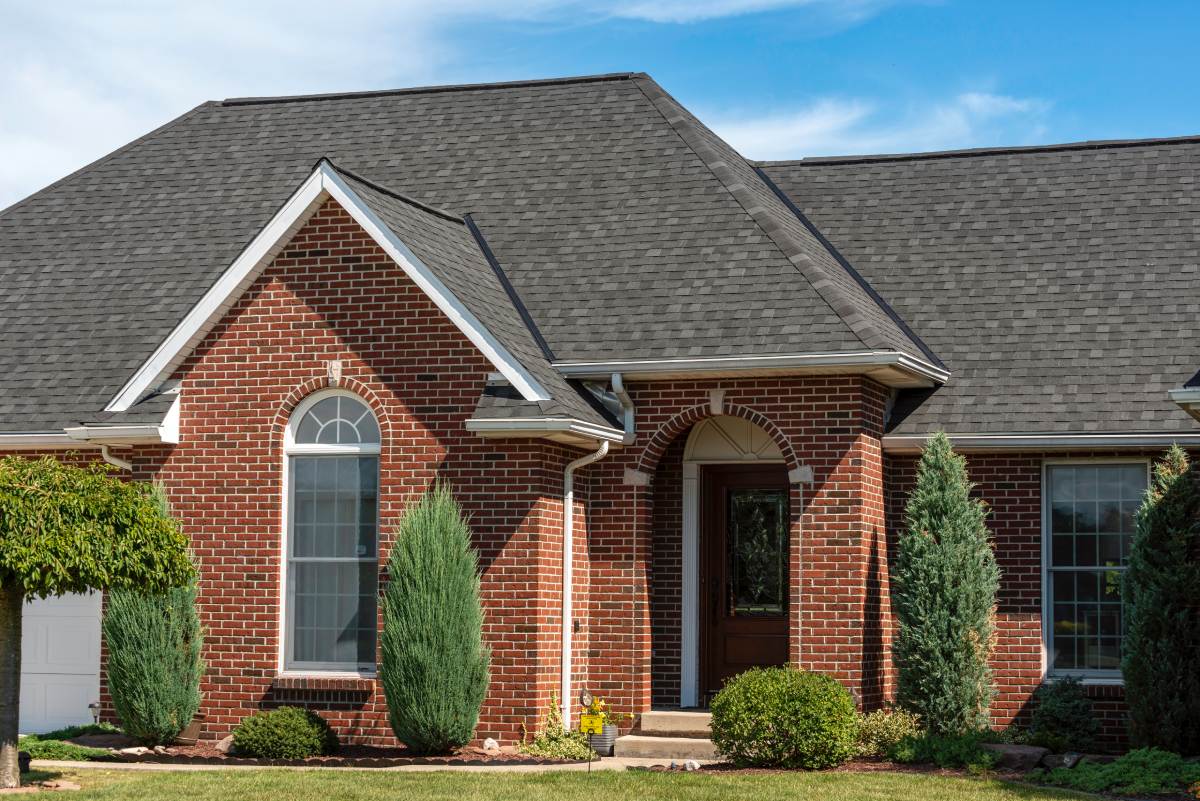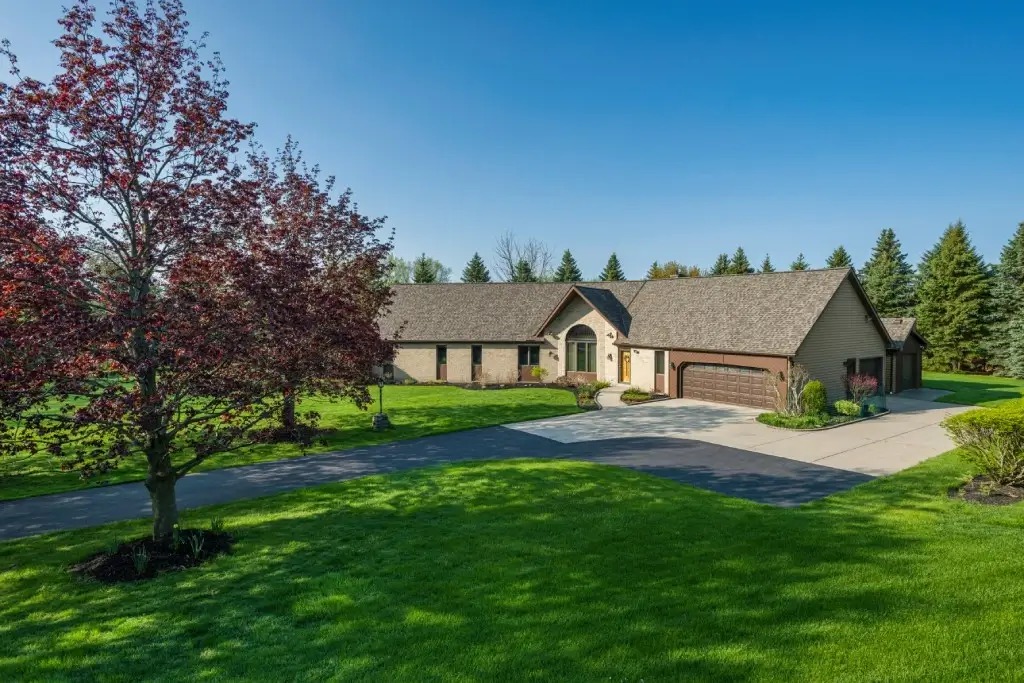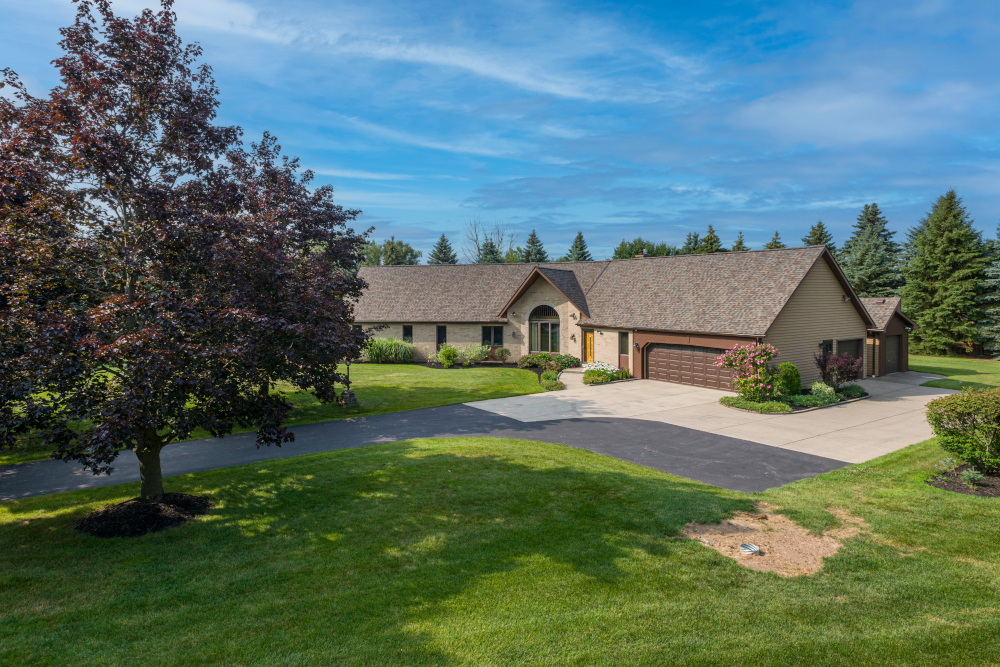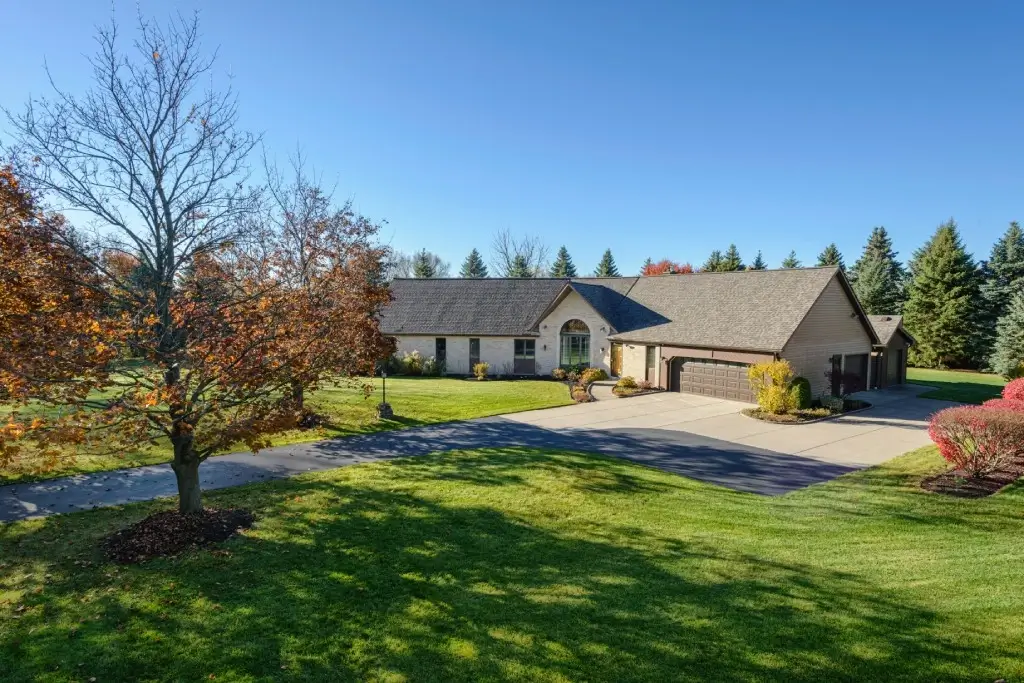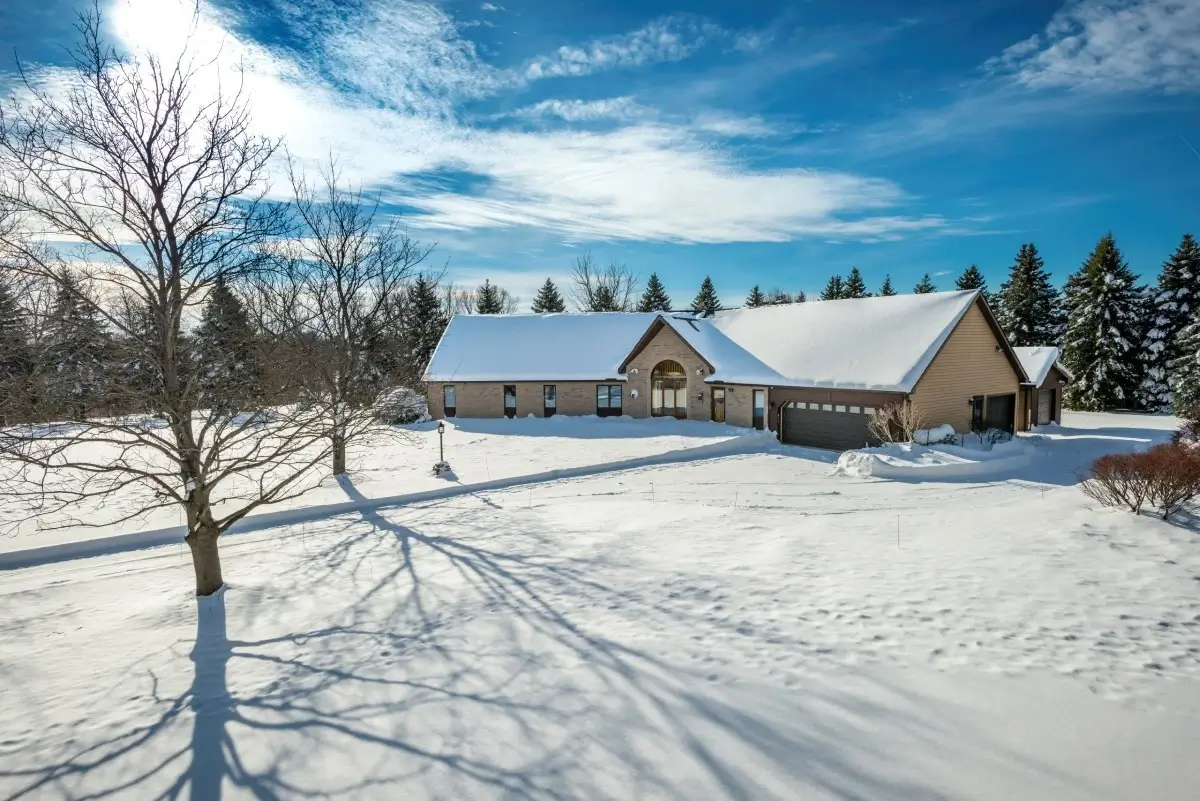Maintaining a home takes effort and dedication. From essential repairs to cosmetic renovations, there are plenty of ways to keep your home in the best shape possible. One area that requires special attention is your roof.
Your roof protects your home from the elements, provides insulation, and adds to the aesthetic of your property. Without proper maintenance and repairs, your roof won’t last as long as it should. This leaves your home vulnerable to water damage, pests, and more.
So, whether you’re building a new house or looking for ways to extend the life of your existing roof, there’s a lot to consider. That’s why we’ve created this ultimate guide to residential roofing systems. In the following sections, you’ll learn everything you need to know to ensure a strong and beautiful roof. Let’s get started!
Understanding Residential Roofing & How It Works
Your roofing system is comprised of multiple components. While there are variations, a typical residential roof includes the following:
- A deck or substrate that sits on top of your house’s walls and rafters. This provides a stable base for your other roofing materials.
- An underlayment of felt paper provides additional protection in case of water damage.
- Shingles, tiles, or metal sheets that cover the roof and provide insulation and weatherproofing.
- Flashing, which is metal pieces used to protect the areas around vents, chimneys, and other protrusions on your roof.
- Other accessories, such as gutters for drainage.
These components work together to give your roof the strength, insulation, and protection it needs. To ensure your roof performs optimally, it’s important to select the right materials and hire a qualified professional for installation.
Now that you know how residential roofing systems work, let’s talk about the different materials you can choose from.
Choosing the Right Roofing Material
When selecting residential roofing materials, there’s a wide range of options available. Depending on your needs and preferences, any of the following materials could be right for you:
1. Asphalt Shingles:
Asphalt shingles are made from a combination of fiberglass, asphalt, and ceramic granules. The fiberglass provides strength and durability, while the asphalt acts as a waterproof barrier. The ceramic granules protect against UV rays and give the shingles their color.
Pros of Asphalt Shingles
- Relatively inexpensive: Asphalt shingles are one of the most affordable roofing options on the market.
- Lightweight: They’re much lighter than other materials, which makes them easy to transport and install.
- Fit any style: You can choose from a variety of colors and styles to match your home’s design.
- Easy to Replace: Individual shingles can be easily replaced if they’re damaged.
Cons of Asphalt Shingles
- Vulnerable to Wind Damage: High winds can damage asphalt shingles, so it’s important to check them regularly for signs of wear and tear.
- Susceptible to Cracking: Asphalt shingles can become brittle over time, which can cause cracking and leaks.
- Shorter Lifespan: Asphalt shingles need to be replaced more frequently than many types of roofing materials.
2. Metal Roofing
Metal roofs come in steel, copper, aluminum, and alloy strips that are soldered together. This type of roofing is extremely durable and can provide excellent protection from the elements.
Pros of Metal Roofing
- Durable and Long-Lasting: Metal roofs are some of the longest-lasting roofing materials on the market.
- Environmentally Friendly: Metal roofs are made from mostly recycled materials and can be recycled again at the end of their lifespans.
- Stylish: These roofs have a chic, modern look that can easily enhance the curb appeal of any home.
- Energy-Efficient: Metal roofs reflect heat and help keep your home cooler in the summer.
Cons of Metal Roofing
- Noisy: Metal roofs can create a loud noise when it rains or hails.
- Can Be Dented: Metal roofs can dent easily, so you’ll need to inspect them regularly.
- Expensive: Metal roofs have a higher installation cost than most other roofing materials.
- Difficult to Repair: It can be challenging to repair these roofs on your own, so you’ll need to hire a professional if any repairs are needed.
3. Wood Shakes:
Wood shakes are made of split cedar logs that are pounded into thin strips with a mallet. This type of roofing is an attractive option, but it does require more maintenance than other materials.
Pros of Wood Shakes
- Attractive: Wood shakes have a rustic, natural look that can really enhance the aesthetic of your home.
- Insect Resistant: Bugs don’t like the smell of cedar and are less likely to make a home in wood shakes.
- Energy-Efficient: Wood shakes help keep your home cooler in the summer and can save you money on energy bills.
- Durable: When properly maintained, wood shakes can last for decades.
Cons of Wood Shakes
- High Maintenance: Unlike other roofing materials, wood shakes need to be inspected and treated regularly in order to stay in good condition.
- Prone to Rotting: If not properly maintained, wood shakes can quickly become rotten or warped due to moisture exposure.
- Discoloration: Poorly maintained wood shakes can become discolored over time due to sun exposure.
4. Slate Roofing:
Slate roofs are made of thin, flat pieces of natural or synthetic stone. This type of roofing is exceptionally durable and can last for over a century with proper maintenance.
Pros of Slate Roofing
- Durable: Slate roofs are incredibly durable and can last a lifetime with proper maintenance.
- Fire Retardant: Slate tiles have fireproofing properties that make them less likely to burn in the event of a fire.
- Timeless Look: The classic look of slate tiles can really enhance the aesthetic of a home.
- Versatile: Slate tiles come in a variety of colors and shapes, so you can customize the look of your roof.
Cons of Slate Roofing
- Heavy: Slate tiles are very heavy, so they must be installed by a professional in order to ensure that the roof structure can support them.
- Expensive: Slate tiles are one of the most expensive roofing materials on the market, so they may not be suitable for everyone’s budget.
- Challenging to Repair: If a slate tile is damaged or broken, finding a replacement that matches its color and shape can be difficult. Additionally, the installation of new tiles requires specialized tools and skills.
5. Tile Roofing:
Tile roofs are made of ceramic, concrete, or clay. This material is much lighter than slate, but they are still quite durable and can last for up to fifty years.
Pros of Tile Roofing
- Lightweight: Tile roofs are much lighter than slate, so they can be installed on a wider variety of roof structures.
- Long Lasting: With proper maintenance, tile roofs can last for many decades.
- Aesthetically Pleasing: Tile roofs come in an array of styles and colors, so you can easily find a design that will match your home.
- Cost Effective: Tile roofs can cost less than some materials, such as slate, making them an attractive option for those on a budget.
Cons of Tile Roofing
- Prone to Leaking: If not properly installed and maintained, tile roofs can be prone to leaking. This is due to the fact that tiles do not provide a perfect seal around nails or edges.
- Fragile: Tile roofs can easily be damaged by high winds or other impacts. Replacing a damaged tile requires specialized tools and skills, making it difficult to repair without professional help.
- Challenging to Repair: If a tile is damaged or broken, it can sometimes be difficult to find a replacement that matches the existing tiles in color and design.
Roofing Styles and Designs: Enhancing Curb Appeal with the Right Roof
Your roof is one of the most prominent features of your home, so it’s important to choose a style that will enhance its overall curb appeal. Here are a few popular residential roofing system styles and designs to consider:
Gable Roof
Gable roofs are some of the most common and recognizable roofing styles. It features two sloping sides that meet at a ridge, creating a triangular shape at each end. This classic design is not only aesthetically pleasing but also practical, as it allows for efficient water runoff and provides more attic space.
Gambrel Roof
A gambrel roof, also known as a barn roof, is a unique design that features two different slopes on each side of the roof. The lower slope is steeper, while the upper slope is more gradual. Gambrel roofs have a charming and rustic appearance, making them a popular choice for farmhouse-style homes.
Hip Roof
A hip roof has four sloping sides that meet at the top to form a ridge. The sides of this residential roofing system style are usually equal in length, creating a pyramid-like shape. Hip roofs are known for their stability and are excellent choices for areas prone to high winds and hurricanes. This style complements a wide range of architectural designs and adds a touch of elegance to any home.
Hip and Valley Roof
A hip and valley roof combines elements of both hip and gable roofs, creating a more complex and visually appealing design. It features multiple hips and valleys, which are the intersections where two roof slopes meet. This roofing style adds depth and character to a home’s exterior, making it an excellent choice for houses with unique architectural features or multiple wings.
Skillion Roof
A skillion roof, also known as a shed roof or mono-pitched roof, is a single-sloped roof that slopes in one direction. This contemporary and minimalist design is often used to create a sleek and modern look. Skillion roofs are popular choices for homes with limited space or for homeowners seeking to add a unique architectural element to their property.
A-Frame Roof
A-Frame roofs, also known as “triangle roofs” or “mountain roofs,” are characterized by their steep slopes on both sides, which meet at the top to form an “A” shape. This style was popularized in the mid-20th century and is often associated with cabins, chalets, and vacation homes in mountainous or wooded areas.
Assessing Your Roofing Needs
Now, if you are looking to improve an existing roof, you may be wondering just exactly what it needs. Does it need a full replacement? Or just some minor repairs? What type of materials should you use for your roofing project? These are all important questions to consider when deciding which type of roof is best for your home.
Here’s how to assess your roofing needs:
1. Conducting a Roof Inspection
The first step to assessing your roofing situation is to hire a professional roofing inspector. A roof inspection is essential for determining your current roof’s condition and identifying any existing damage.
The inspector will look for signs of wear and tear, such as loose shingles, missing or damaged flashing, and cracked gutters. It’s also important to check for weak spots in the structure that could lead to leaks or future damage. Once the inspection is complete, your roofer can advise you on the best course of action for your home.
2. Deciding Between Repair and Replacement
Once you’ve done a thorough inspection of your residential roofing system, it’s time to decide whether repair or replacement is the best option. If there are only minor issues with your current roof, then a repair may be all that is needed. If the damage is extensive or structural, then a full replacement might be necessary.
Your roofing contractor will be able to advise you on which option will provide the best outcome for your home.
3. Estimating the Cost of a Residential Roofing Project
When it comes to estimating the cost of a residential roofing project, there are several factors to consider. The size and pitch of the roof, the type of materials being used, labor costs, and any additional services such as gutter replacement or skylight installation are all factors that can affect the total cost.
You should also factor in the potential savings you could get from energy-efficient materials. Many types of roofing materials offer superior insulation, such as metal, asphalt shingles, and tile. Investing in these higher-end products may cost more upfront but can potentially save you money on your utility bills in the long run.
It’s important to note that while DIY roofing projects can be tempting, they often end up costing more in the long run due to improper installation and the risk of further damage. Hiring a professional roofer with experience and expertise will ensure the job is done right the first time.
Roofing Warranties and Guarantees: What Homeowners Need to Know
When it comes to residential roofing projects, homeowners should always look for a warranty or guarantee that offers protection and peace of mind. Most reputable contractors provide a variety of warranties or guarantees on their workmanship and the materials they use.
Be sure to read all the fine print and ask questions about any terms or conditions you don’t understand. If something doesn’t seem right, it’s best to get clarification before signing a contract. After all, warranties and guarantees are there to protect your investment for years to come.
Understanding Residential Roofing Codes and Regulations: Compliance Made Easy
In addition to understanding warranties and guarantees provided by contractors, homeowners need to be aware of residential roofing codes and regulations in their area. This is especially true when it comes to the following:
Energy Efficiency and Roofing
Many municipalities have adopted codes and regulations that require residential roofing materials to meet certain energy efficiency standards.
When selecting a contractor, look for one who is experienced in installing energy-efficient materials and understands applicable building codes. Additionally, you should consider purchasing materials that are certified by ENERGY STAR or similar programs.
Enhancing Curb Appeal with Residential Roofing
Curb appeal is an important factor to consider when selecting residential roofing materials. From classic asphalt shingles to metal and tile roofs, there are many options that can help homeowners enhance the look of their homes.
It’s also important to keep in mind that certain colors or textures may require additional maintenance or cleaning efforts. Be sure to ask your contractor about the best way to maintain your roof in order to preserve it for years to come.
Environmental Considerations in Residential Roofing
When selecting residential roofing system materials, be sure to consider their environmental impact. Some materials are more durable than others and require fewer replacement cycles over time. Additionally, some roofing systems can help reduce energy costs by reflecting the sun’s rays, while others do not.
Try to balance these considerations when selecting a residential roofing system that meets both your aesthetic and practical needs. Don’t hesitate to ask your contractor about their environmental policies and whether they offer green roofing options.
Conclusion
As you can see, there’s a lot to consider when it comes to residential roofing systems. From selecting materials to enhancing curb appeal and considering environmental factors, this decision requires careful thought and research. Be sure to consult a trusted contractor and take the time to weigh all of your options in order to make an informed decision.
At William C. Rott & Son, we understand the importance of selecting quality roofing materials that last for years and enhance your home’s overall appearance. We provide superior craftsmanship, knowledgeable advice, and top-notch customer service to help you make the best roofing decision for your home. Whether you need a new roof installation or repairs, our experienced team is here to provide guidance and support for all of your residential roofing needs.
Contact us today to get started!

